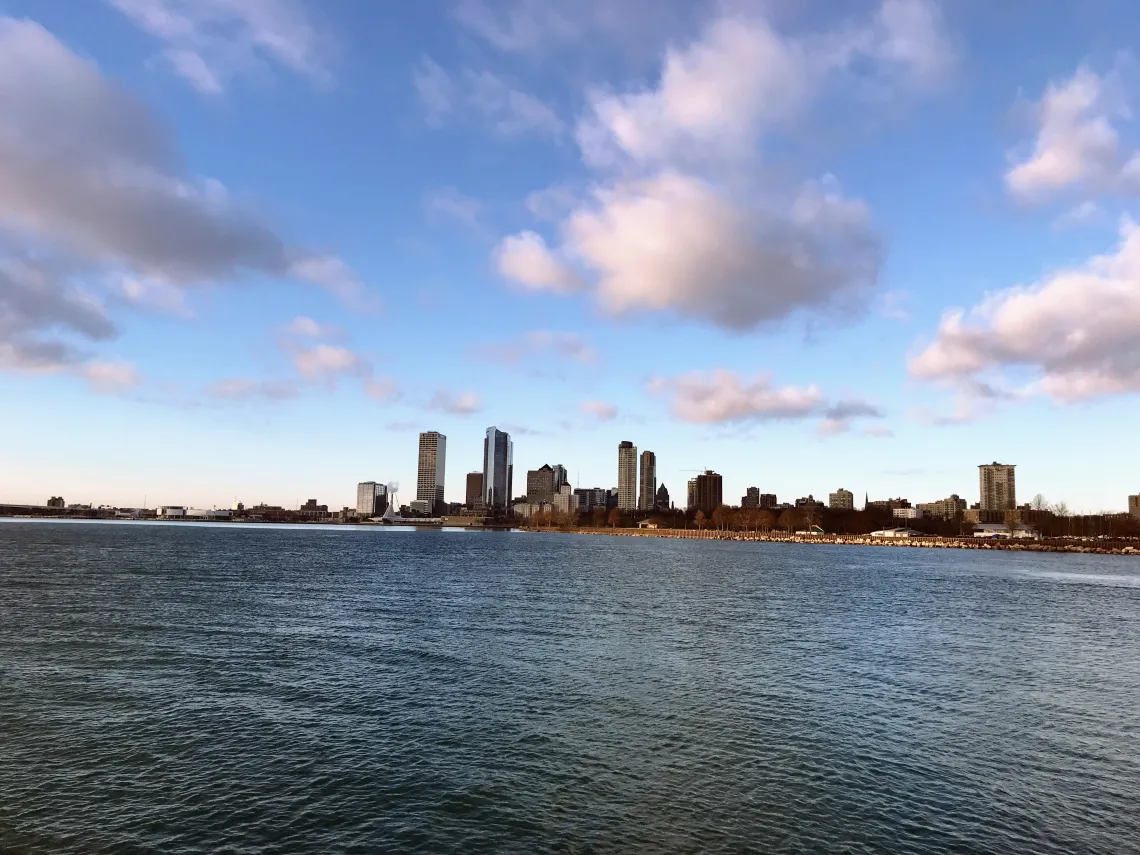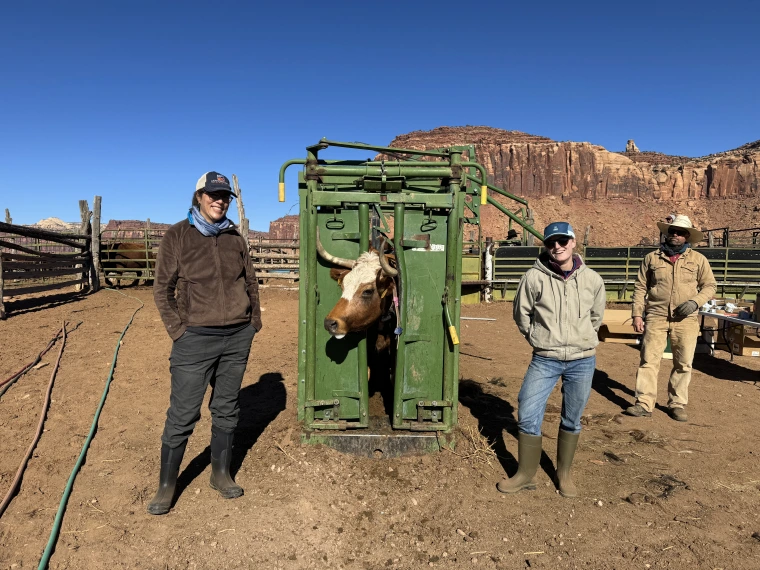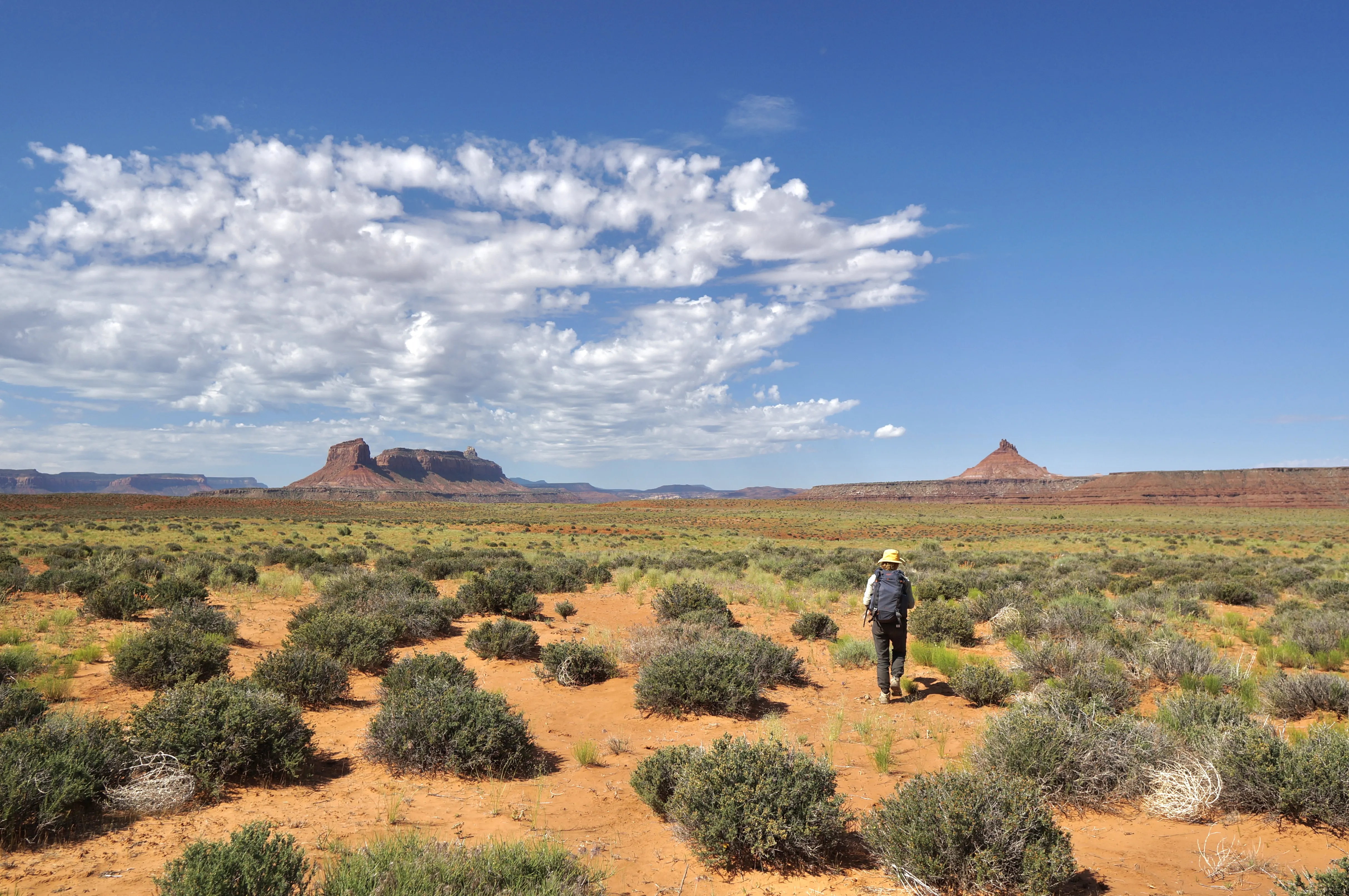Facing Drought: An NRWD Fellow’s Journey from Milwaukee to Utah’s Arid Landscapes

View of downtown Milwaukee over Lake Michigan
Maria Stahl
Growing up in Milwaukee, Wisconsin, I was surrounded by freshwater. Lake Michigan to the east, the Milwaukee River to the west, and countless ponds and streams between—water dominated the natural landscape. Rather than orienting myself with the mountains, as so many people do in the West, I oriented myself to the lake. Even when it was out of eyesight, I had a sixth sense telling me which way was east, to the lake.
When I moved to Logan, Utah to begin my graduate studies at Utah State University in the fall of 2021, I felt a sense of anxiety I had not felt before: where was the water? What had once felt like an almost limitless and constant resource was now a scarcity, a privilege rather than a given. Of course, I had known this before moving out west—indeed, my dissertation research would focus on the sustainability of a drought-tolerant breed of beef cattle in southern Utah—but I had no idea how this intense dryness would affect me emotionally.

Posing with a cow at the Dugout Ranch
Codi Backen
As I began my research in the spring of 2022 at the Dugout Ranch in San Juan County, Utah, I learned two things very quickly: 1) this was a remarkably dry year in a very long string of remarkably dry years, and 2) as much as I was emotionally affected by the dryness of the West, livestock producers and other land managers in the area were feeling the effects of this long-term drought even more acutely, specifically in their pocketbooks. “This is not normal”, “the reservoir should be full by now”, “this land used to support two/three/four times as many cows”: refrains I heard left and right from producers in southern Utah. Something big was happening. So when I saw that aridification and its effects on land managers would be this year’s theme for the SWCASC NRWD fellowship, I knew immediately that I wanted in. Over the last nine months, we have been working on a project to bring more attention to the lived experiences of livestock producers and other land managers experiencing the effects of aridification—pairing and validating these qualitative accounts with quantitative, landscape-scale data. Our planned work includes a written survey that we will widely distribute to producers across the SWCASC states, as well as in-depth interviews with a smaller subset of respondents. This approach is new (and, honestly, a little daunting!) to me, as I have only ever worked with numbers, never qualitative survey results or interview responses. But I have already learned a lot, both about managing qualitative data and about working as part of an interdisciplinary team. This project is exciting, not just because it is broadening our skills as researchers, but also because it will capture a human perspective on a fundamentally human problem. Aridification poses a grave threat to our natural resources, but it also crucially affects communities and families of people who have been working this land for generations. Even more, it is essential to remember that successful change on the range is the product of producers, land managers, scientists, and other stakeholders working in collaboration. We hope to start that collaboration by listening to and learning from the people closest to this land, and working with them to protect and sustain our rangelands for generations to come.

Walking to a study plot at the Dugout Ranch
Jack Van Allsburg

